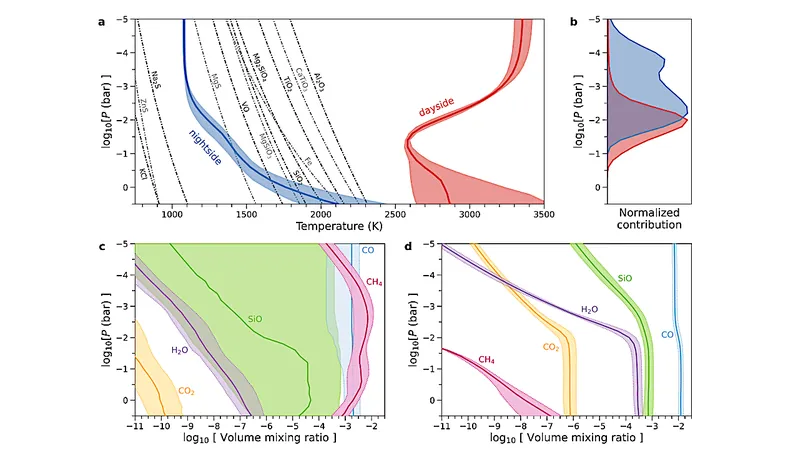
Groundbreaking Atmospheric Discoveries on the Exoplanet WASP-121b
2025-06-08
Author: Emma
Revealing the Secrets of Ultrahot Giants
In a thrilling breakthrough for astronomers, the atmosphere of the ultrahot giant exoplanet WASP-121b has unveiled the presence of key refractory elements. With components like iron, magnesium, and silicon detected, scientists can finally piece together the planet’s formation narrative.
Challenging Discoveries and Stellar Ratios
However, capturing simultaneous glimpses of these refractories along with volatile gases has always presented a daunting challenge, as their spectral signatures stretch across a vast range of wavelengths. But with the power of the James Webb Space Telescope (JWST), researchers achieved remarkable success.
In a single observation, they detected vital indicators: water vapor (H2O) at an astonishing 5.5-13.5σ, carbon monoxide (CO) at 10.8-12.8σ, and silicon monoxide (SiO) at 5.7-6.2σ in the daylit atmosphere. Even more intriguing, methane (CH4) was identified on the cooler nightside with a significance of 3.1-5.1σ.
A Glimpse into Formation and Dynamics
These findings reveal a super-stellar composition for the atmospheric ratios of carbon to hydrogen (C/H), oxygen to hydrogen (O/H), silicon to hydrogen (Si/H), and carbon to oxygen (C/O). This suggests that both pebbles and planetesimals have played critical roles during the formation of such awe-inspiring giant planets.
Additionally, the methane-rich nightside hints at dynamic atmospheric processes, including significant vertical mixing, which dramatically influences the chemical makeup of these exotic worlds.
The Future of Atmospheric Exploration
These discoveries not only deepen our understanding of WASP-121b but also pave the way for future explorations of other distant worlds. As technology continues to evolve, the secrets held within the atmospheres of exoplanets may soon be within our reach, bringing us closer to answering profound questions about the universe and the formation of planetary systems.









 Brasil (PT)
Brasil (PT)
 Canada (EN)
Canada (EN)
 Chile (ES)
Chile (ES)
 Česko (CS)
Česko (CS)
 대한민국 (KO)
대한민국 (KO)
 España (ES)
España (ES)
 France (FR)
France (FR)
 Hong Kong (EN)
Hong Kong (EN)
 Italia (IT)
Italia (IT)
 日本 (JA)
日本 (JA)
 Magyarország (HU)
Magyarország (HU)
 Norge (NO)
Norge (NO)
 Polska (PL)
Polska (PL)
 Schweiz (DE)
Schweiz (DE)
 Singapore (EN)
Singapore (EN)
 Sverige (SV)
Sverige (SV)
 Suomi (FI)
Suomi (FI)
 Türkiye (TR)
Türkiye (TR)
 الإمارات العربية المتحدة (AR)
الإمارات العربية المتحدة (AR)